An animated short about post-apocalyptic ant people, directed by Ryō Hirano.
Tag: ‘Art’
Photos of Sakurajima volcano
On a recent visit to Japan, alien landscape photographer Martin Rietze captured some spectacular images of Sakurajima volcano in Kagoshima prefecture.
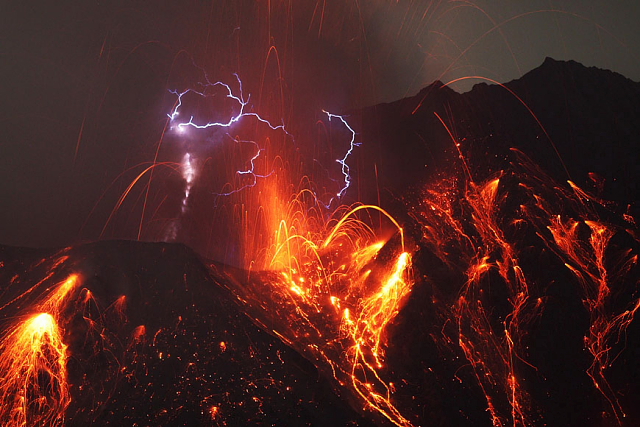
Multiple lightning flashes caused by fast moving fine ash
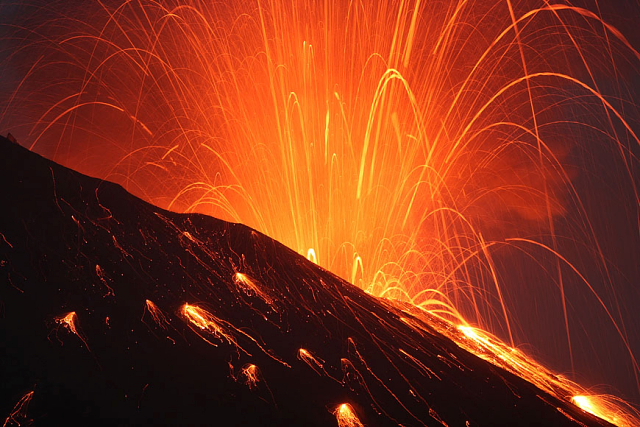
Lava bombs hitting the flank

Strombolian eruption with lightning
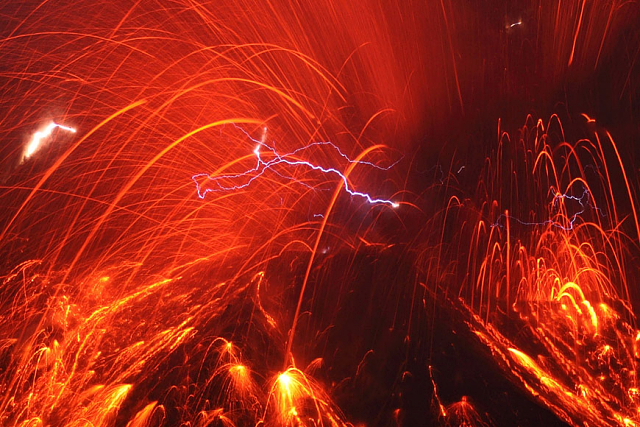
Detail with multiple lightning flashes

Lava brightens the ash cloud
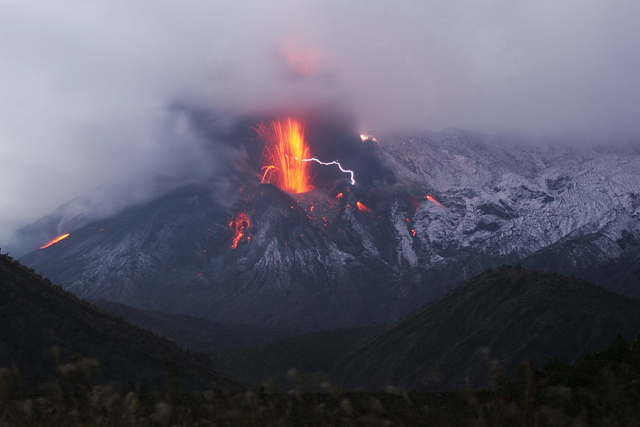
Ash eruption causing lightning
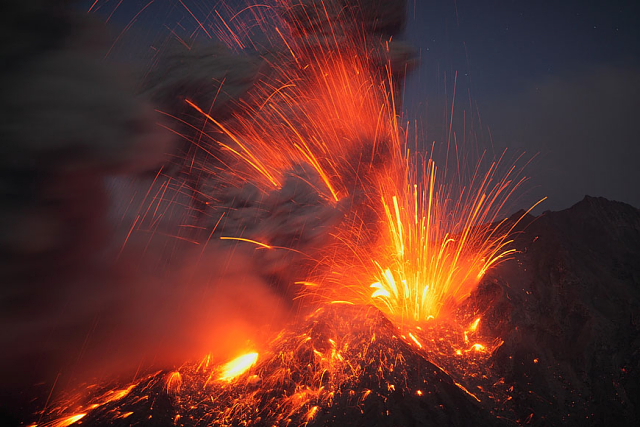
Violent eruption
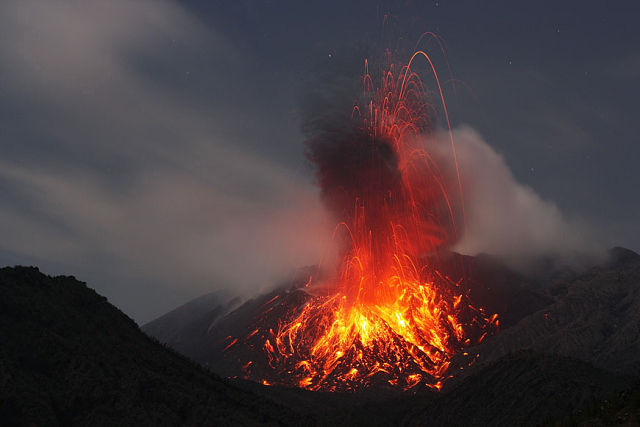
The photos were taken between December 24, 2009 and January 10, 2010.
[Link: Martin Rietze]
Dance, kappa, dance
Japan's legendary kappa grooves it up in the new animated music video by electropop group Omodaka.
For more kappa coolness, check out the video for "MOGU MOGU" by Chinza Dopeness, directed by Fantasista Utamaro. (Thanks, chee!)
London dekochari
A dazzling dekochari art bike has been spotted on the streets of East London.
+ Video
Built in a mere five weeks by London resident Charlie Hope and friends, this dekochari features a flashy light display and a body of precision-cut aluminum sheeting that has been hand-folded and riveted to a steel frame.
The music in the video is "Ichiban-boshi Blues" (vocals by Bunta Sugawara and Kinya Aikawa), the theme song from the Torakku Yarou movie series that sparked Japan's dekotora art truck craze in the '70s, which in turn inspired the dekochari phenomenon.
[See also: Dekochari art bikes (video)]
Vintage Japanese industrial expo posters
Here is a collection of posters from various expositions held in Japan in the 1920s to 1940s.
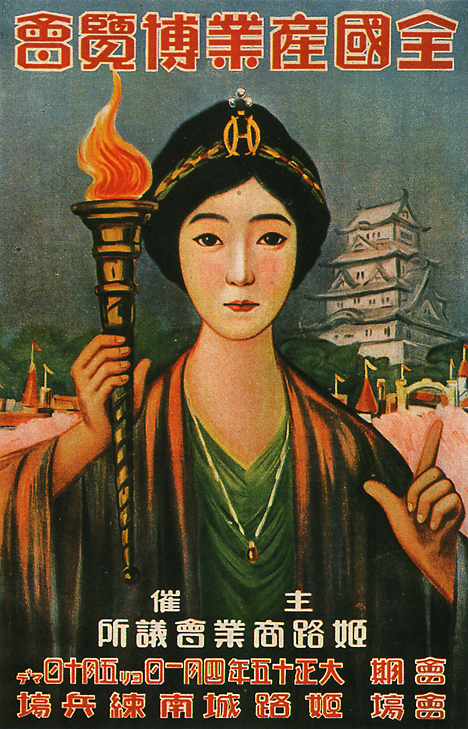
National Industrial Exhibition - Himeji, 1926 [+]

National Products Progress Exhibition - Sapporo, 1926 [+]
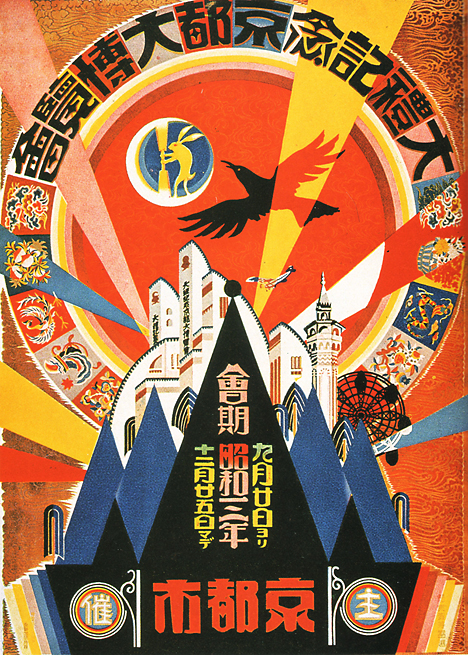
Grand Exposition in Commemoration of the Imperial Coronation - Kyoto, 1928 [+]
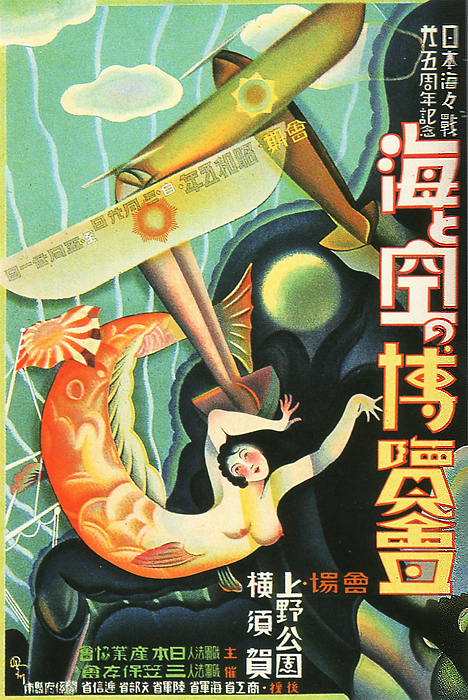
Sea and Air Exhibition - Tokyo, 1930 [+]
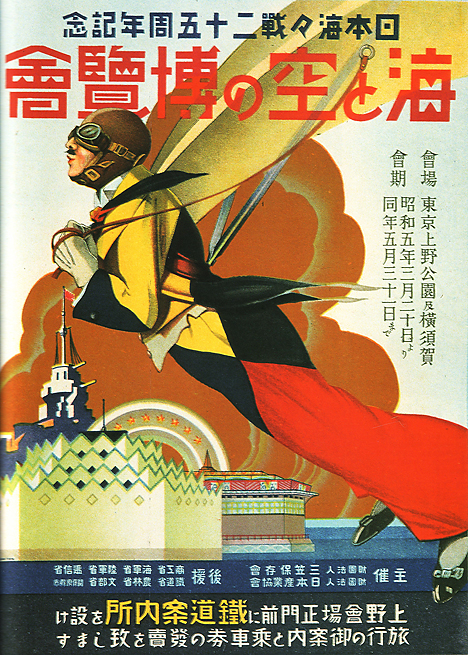
Sea and Air Exhibition - Tokyo, 1930 [+]
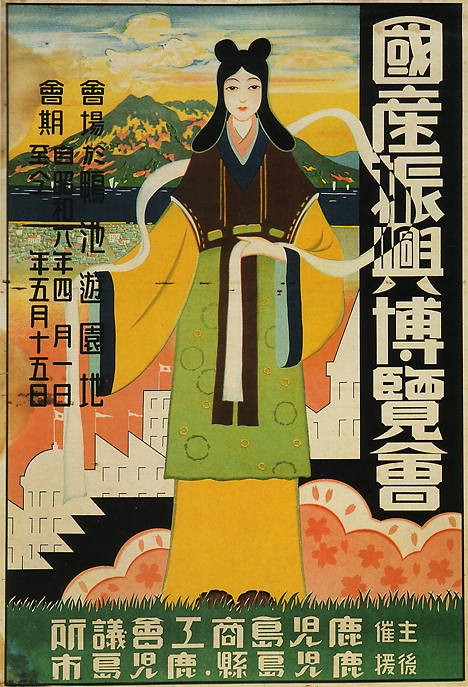
The National Products Progress Exhibition - Kagoshima, 1931 [+]
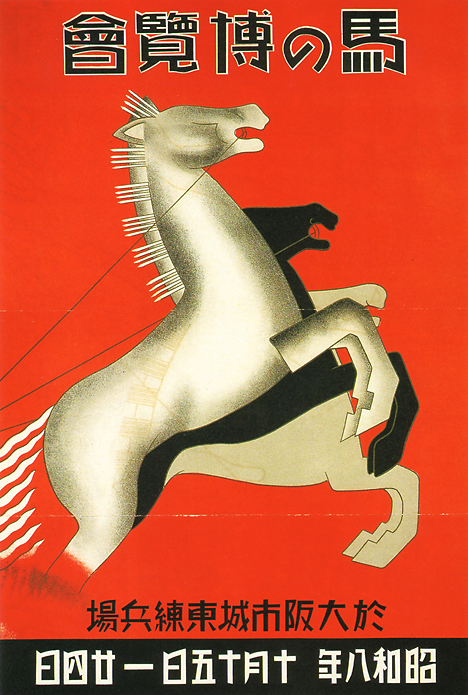
National Horse Exhibition - Osaka, 1933 [+]
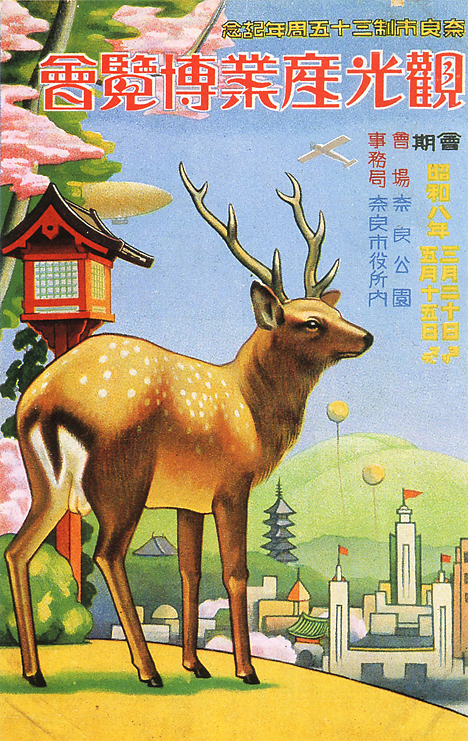
Tourism Industry Exhibition - Nara, 1933 [+]
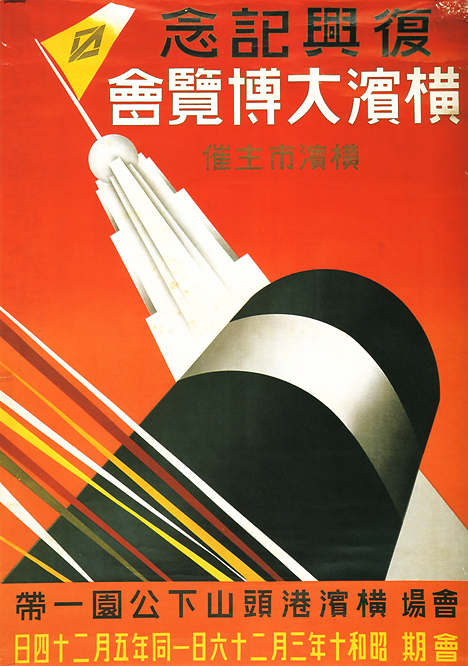
Yokohama Exposition - Yokohama, 1935 [+]
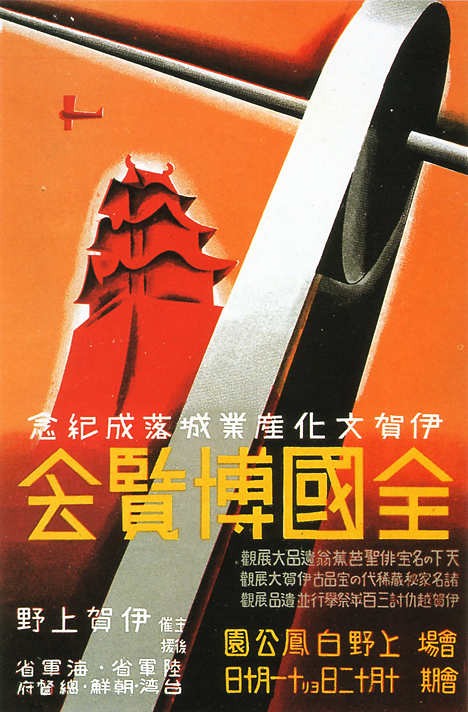
National Exposition - Iga-Ueno, 1935 [+]
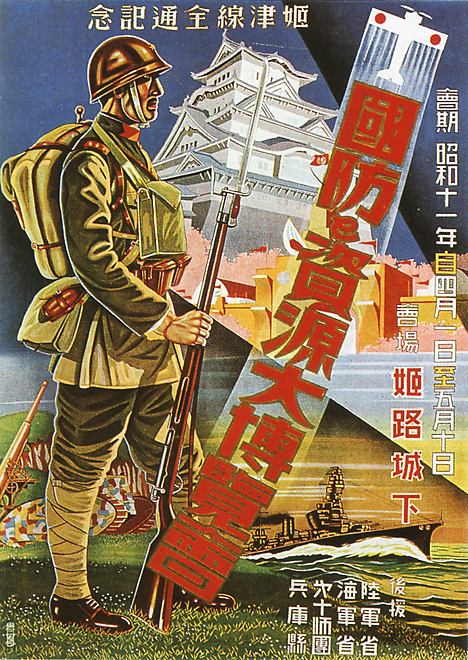
National Defense and Resources Exposition - Himeji, 1936 [+]
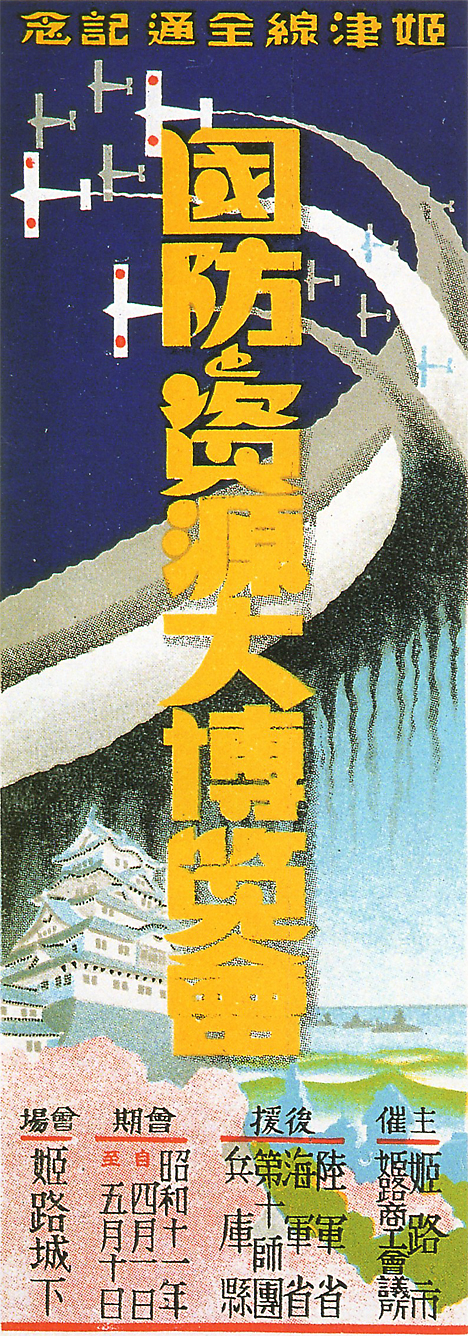
National Defense and Resources Exposition - Himeji, 1936
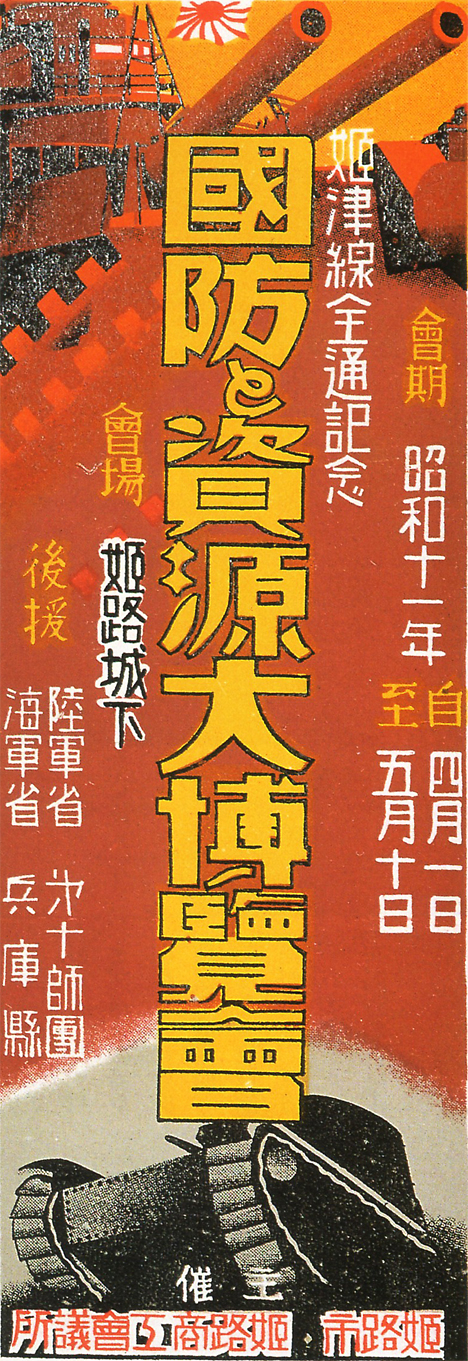
National Defense and Resources Exposition - Himeji, 1936
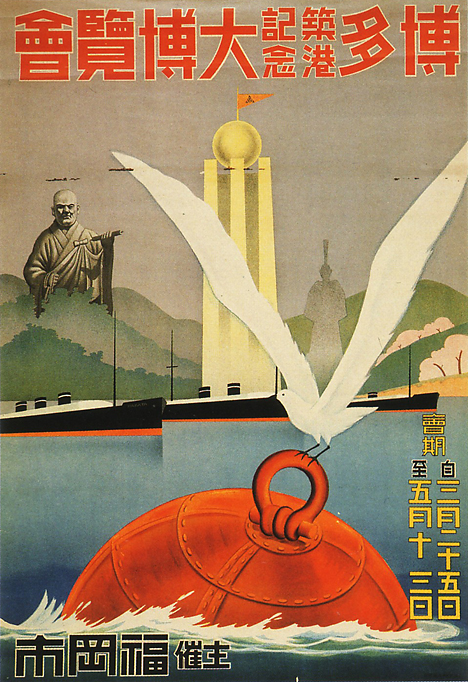
Exposition Commemorating Hakata Port Construction - Fukuoka, 1936 [+]
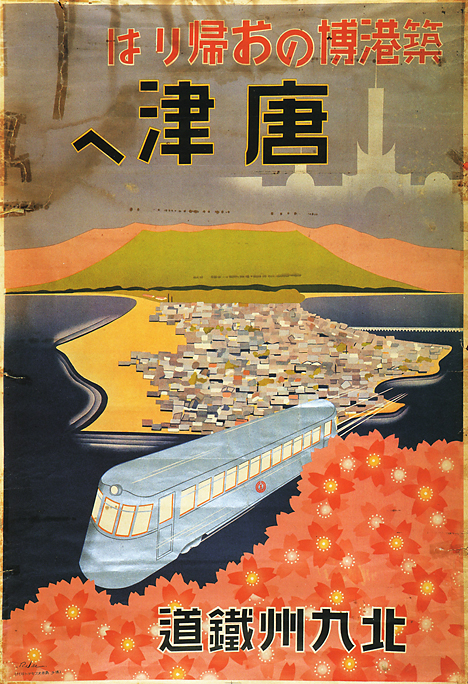
Exposition Commemorating the Construction of Hakata Port - Fukuoka, 1936 [+]
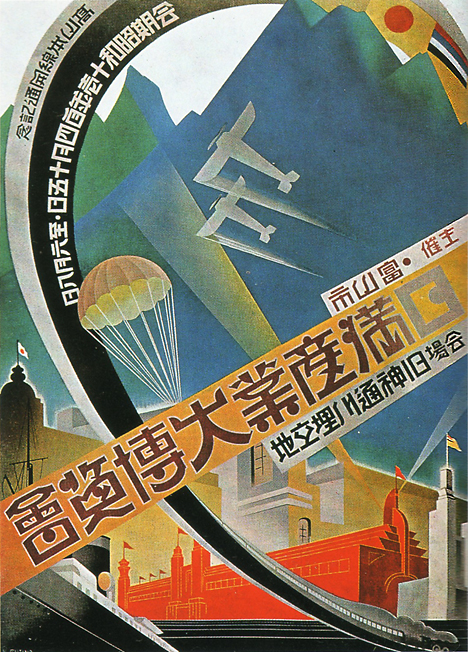
Japan-Manchuria Industrial Exhibition - Toyama, 1936 [+]
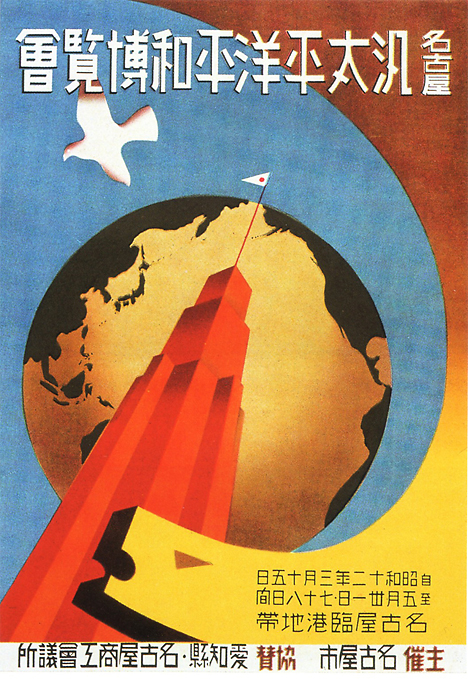
Nagoya Pan-Pacific Peace Exposition - Nagoya, 1937 [+]
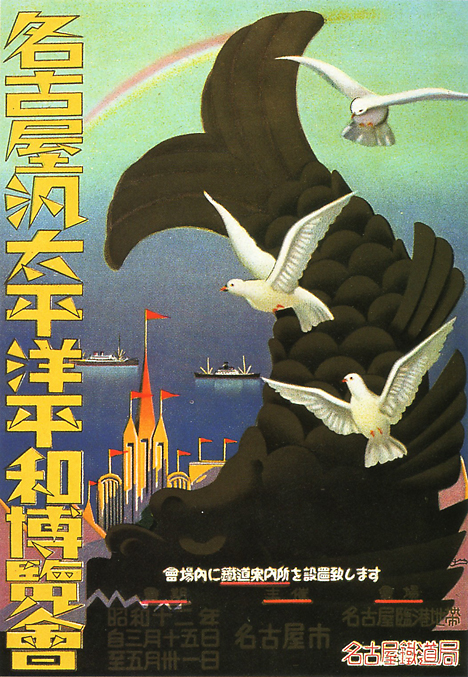
Nagoya Pan-Pacific Peace Exposition - Nagoya, 1937 [+]
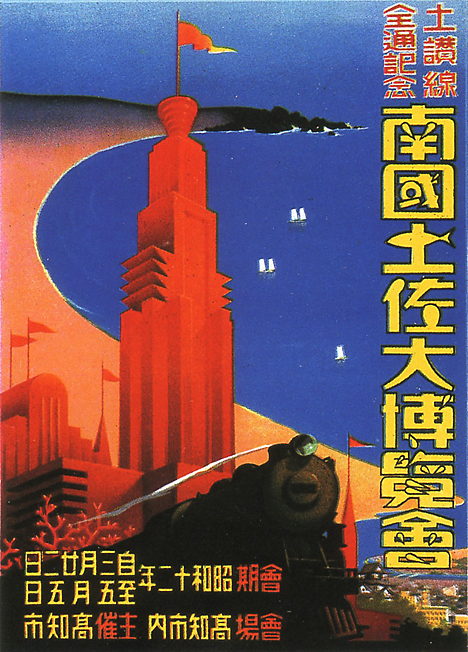
Nangoku Tosa Exhibition - Kochi, 1937 [+]
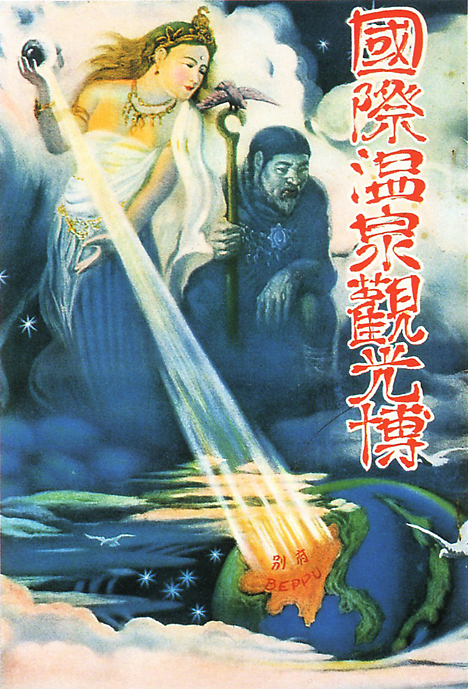
International Hot Spring Tourism Exposition - Beppu, 1937 [+]
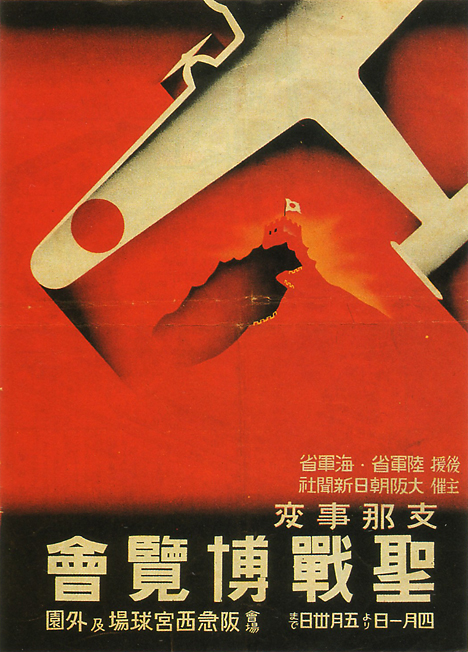
Second Sino-Japanese War Exhibition - Osaka, 1938 [+]
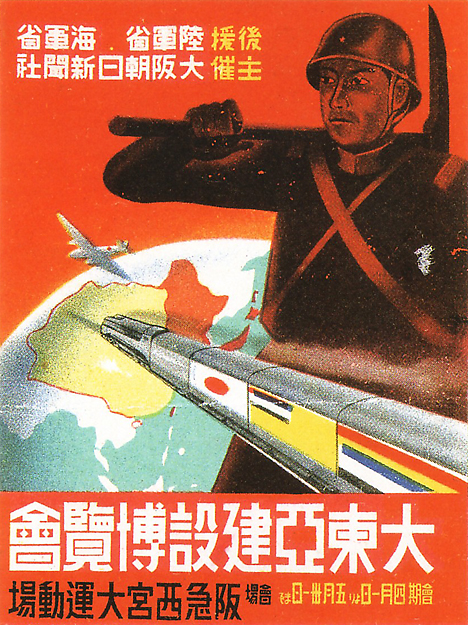
Greater East Asia Construction Exposition - Osaka, 1939 [+]
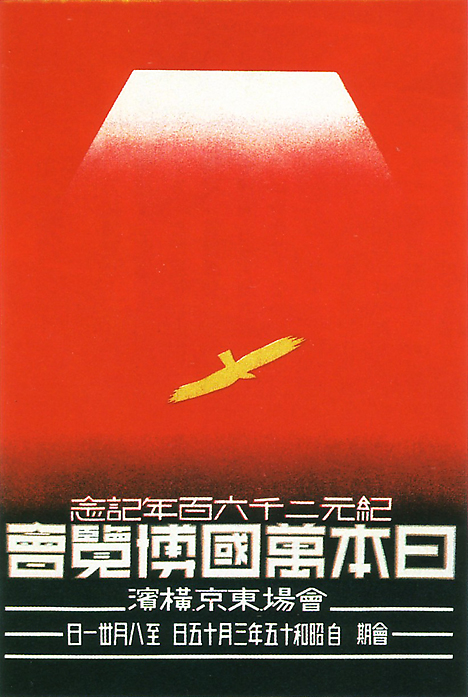
National Defense Science Exposition - Tokyo/Kanagawa, 1940 [+]
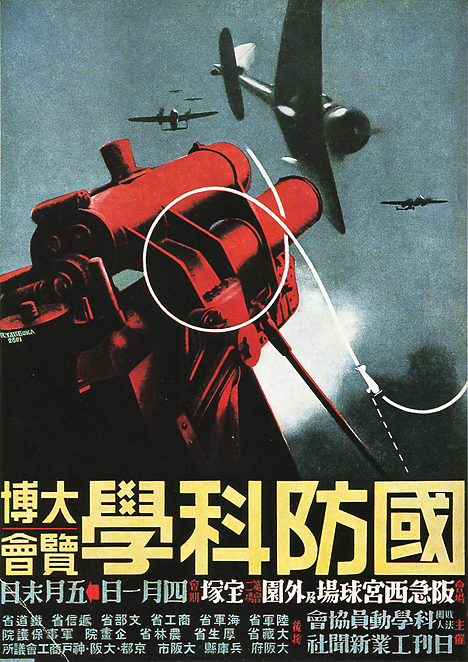
National Defense Science Exposition - Hyogo, 1941 [+]
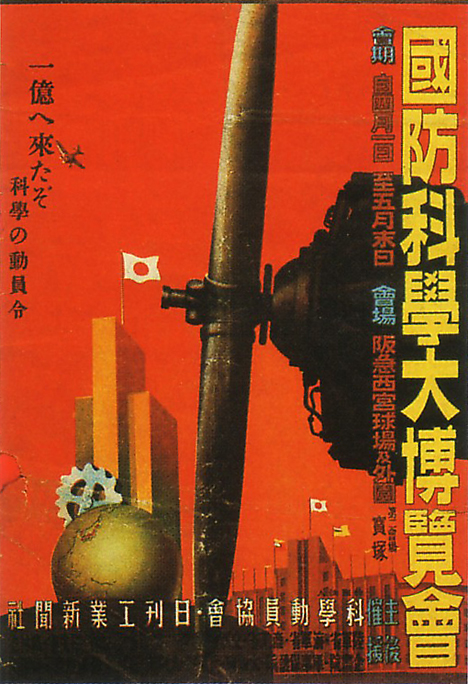
National Defense Science Exposition - Hyogo, 1941
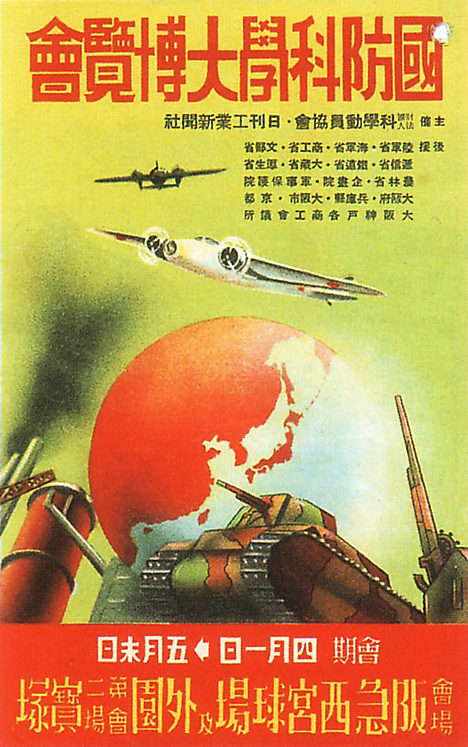
National Defense Science Exposition - Hyogo, 1941
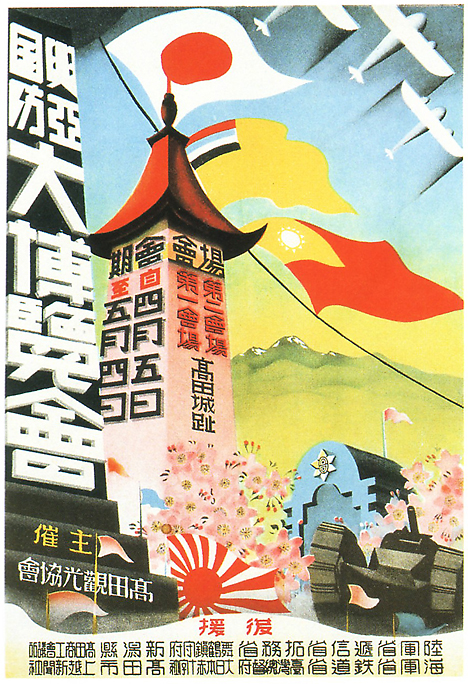
Asia Development and Defense Exposition - Toyota City, 1941 [+]
[Via: Nihon no Hakurankai, published by Heibonsha Limited, 2005]
Snow sculptures at Sapporo Snow Festival 2010
This year's Sapporo Snow Festival kicked off last weekend, bringing hundreds of massive snow sculptures into the streets of Japan's northern capital. Here's a look at some of the works on display at the event, which runs until February 11.
+ Video

Hatsune Miku [Photo by kamemaruk]

Michael Jackson [Photo by tmaeda_japan]

Frauenkirche (The Church of Our Lady) [Photo by North☆Star]

Northern Zoos [Photo via Sapporo Snow Festival website]

Northern Zoos [Photo by 悪さー]

Northern Zoos [Photo by 悪さー]

The Place Where Dreams Come True [Photo by minkara]

The Place Where Dreams Come True [Photo by zuiko]

Gundam [Photo by あくあ]

Royal Palace of Baekje [Photo by 野鳥大好き]

Buddha [Photo by あくあ]

Kodama [Photo by あくあ]

Gundam [Photo by あくあ]

Iolani Palace [Photo by tmaeda_japan]

[Photo by あくあ]

Seitokai no Ichizon [Photo by ryu.i4]

[Photo by あくあ]

Chibi Maruko-chan [Photo by あくあ]
Monster illustrations from ‘Yokai Jiten’
Here's a peek at a few creatures profiled in Yōkai Jiten ("Yōkai Encyclopedia"), an informative guide to 100 of Japan's traditional monsters, written and illustrated by manga artist Shigeru Mizuki in 1981.
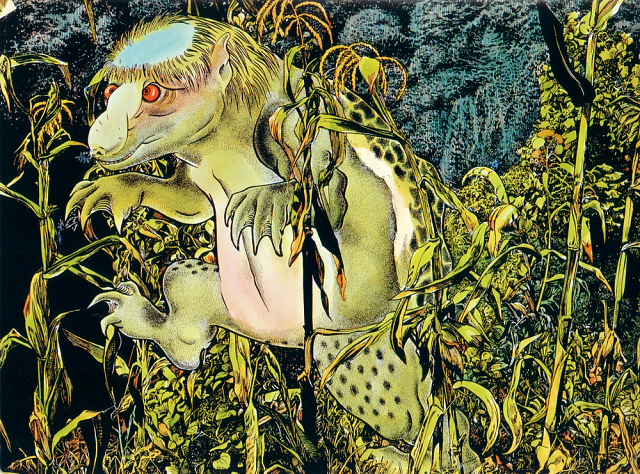
Suiko [+]
The suiko (lit. "water tiger") is a king-sized variety of kappa living in and around the Chikugo River (Kyushu), Lake Biwa (Shiga prefecture), and other bodies of water across Japan.
In addition to prowling around at night and making mischief, the suiko has the power to possess people. Those possessed by a suiko descend into a temporary state of madness, but they recover quickly after the creature withdraws.
At least once a year, the suiko drags a human victim into the water, sucks out his blood, and returns the body to shore. It is best not to have a funeral for the victim of a suiko attack. Instead, the body should be left on a wooden plank inside a small thatched hut in a field. If done properly, this course of action causes the flesh of the suiko perpetrator to slowly rot until it dies.
* * * * *
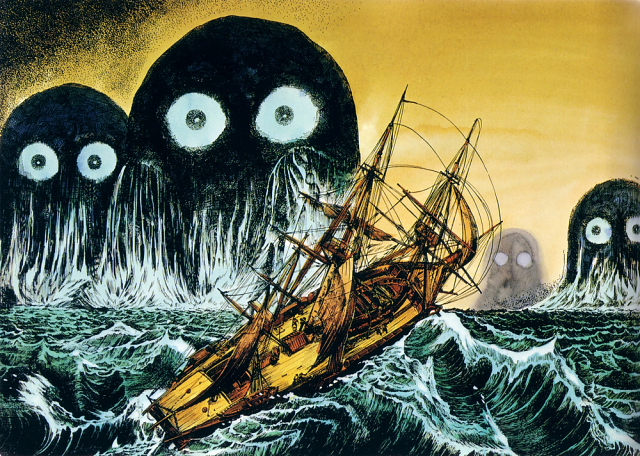
Umi-bōzu [+]
Umi-bōzu are giant black bulbous beings that live in the sea. Sometimes they have glowing eyes and a beak, and other times they have no facial features at all. To survive an umi-bōzu encounter at sea, one should remain quiet and look in the opposite direction. Speaking or looking at the creature may send it into a rage -- and that usually ends in tragedy.
* * * * *
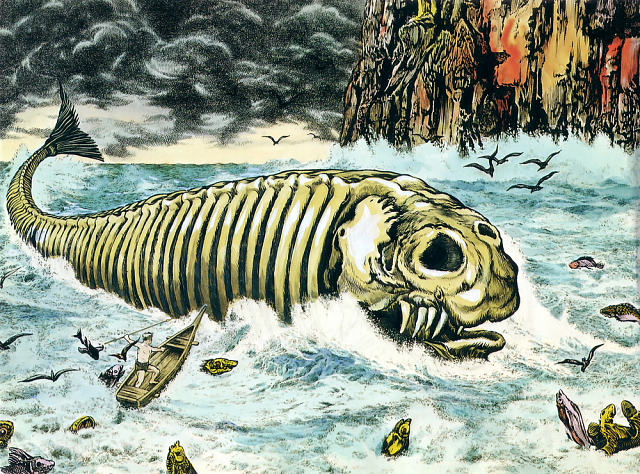
Bake-kujira [+]
Long ago, a mysterious sea creature known as the bake-kujira (lit. "ghost whale") used to appear at night in the waters around an island in Shimane prefecture. The thing looked like the skeleton of a giant whale, and it was usually accompanied by a flock of strange birds when it came drifting in with the tide. Later, when the tide started to recede, peculiar fish would become visible in the water around the monster. Fisherman trying to catch the bake-kujira claimed their harpoons passed through the creature as if it were not there.
* * * * *
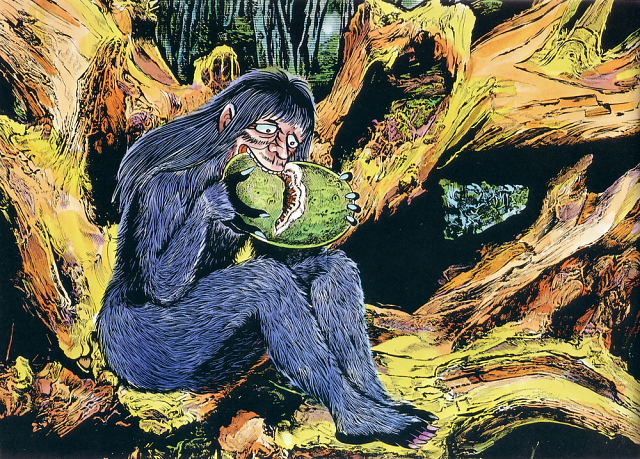
Satori [+]
The satori is a type of mountain-dwelling goblin that can read human minds. When it encounters travelers passing through the mountains, the creature approaches them and begins speaking their thoughts aloud. Once the victims become thoroughly confused and disoriented, the satori captures and eats them.
It is said that an empty mind is the best protection against a satori attack. Thinking nothing at all causes the creature to turn away in boredom or flee in fear. A notorious satori named Omoi lives on the slopes of Mt Fuji.
* * * * *
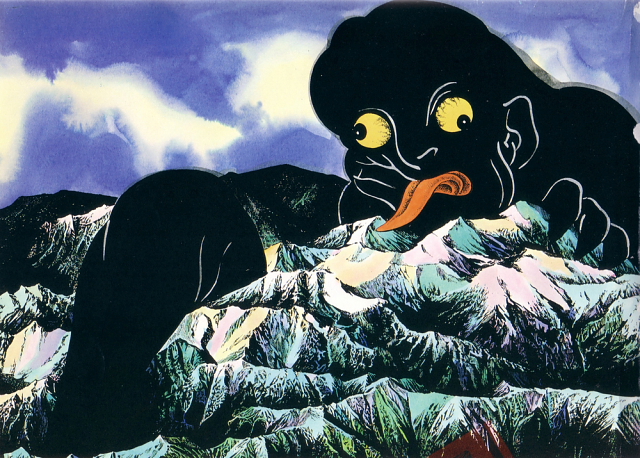
Ōnyūdō [+]
The ōnyūdō (lit. "large monk") appears in numerous Japanese folk tales. His appearance varies from story to story, but he is always big, ranging anywhere from 2 meters (6 ft 6 in) tall to as large as a mountain. In most cases, the ōnyūdō is a malevolent figure that can cause people to fall ill simply by looking at them. Some stories describe him as a fox or tanuki (raccoon dog) that has shape-shifted, but in most stories his true identity is a mystery.
* * * * *
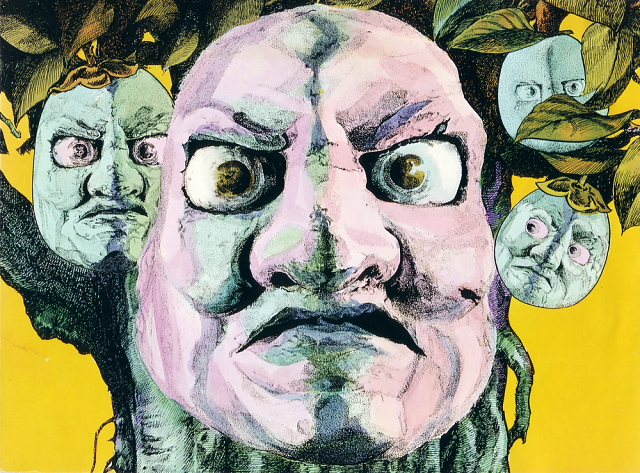
Tankororin [+]
One type of ōnyūdō, called tankororin, is known to spring forth from untended persimmon trees. The fruits transform into tankororin if left unpicked on the tree for too long.
* * * * *
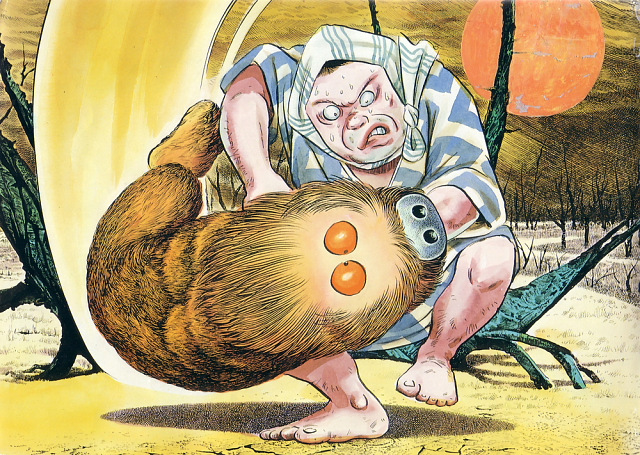
Bakki [+]
The bakki is a furry creature with eyes on top of its head. It measures 60 to 90 centimeters (2 to 3 ft) long and usually appears as a blur because it runs so fast. The bakki is regarded as a great threat to the environment, as it causes moisture to disappear wherever it goes. Plants and trees wither, crops fail, and ponds evaporate. The only way to eliminate a bakki is to capture it and submerge it in dirty water.
* * * * *
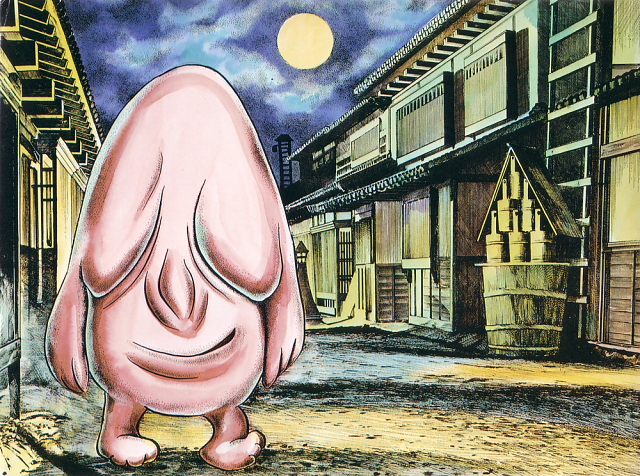
Nuppefuhofu [+]
The nuppefuhofu (a.k.a. nuppeppo) is a man-sized lump of decaying human flesh usually found hanging around old abandoned temples and graveyards. Aside from the creature's massive flabs of flesh, the only features are its arms and legs -- and its horrid smell. The nuppefuhofu enjoys long aimless walks after dark, and it appears to derive satisfaction from frightening people on the street at night.
* * * * *
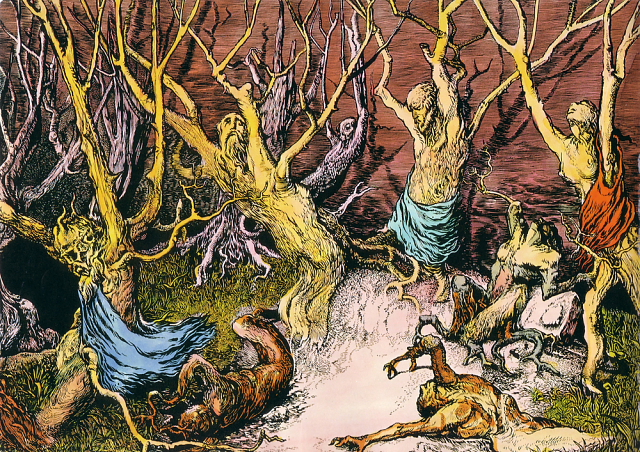
Koboku-no-kai [+]
Koboku-no-kai are spirits of old trees. One such tree spirit was encountered by Tarōemon, a man who lived in Niigata prefecture long ago. One drunken night, Tarōemon noticed a prowler standing next to the old tree in front of his house. He stepped outside to confront the stranger, and they started fighting. Tarōemon subdued the man and managed to drag him inside, only to discover that he had transformed into a large tree branch. The next morning, Tarōemon took the branch to a nearby temple. The resident priest told Tarōemon that the old tree in front of his house was occupied by a spirit. After the priest recited a chant, the tree never caused any trouble again.
[See also: Anatomy of Japanese folk monsters]
‘Bad Apple!!’ stop-motion animation
"Bad Apple!!" is a magical piece of stop-motion animation made from 6,566 still photos of printed bitmaps.
+ Video
The creator, Nico Nico Douga user "shige-ruuu," says he made the video without using photo-editing software. The images were captured with a webcam, and the effects were achieved by changing the camera position and adjusting the focus, brightness, zoom, exposure and gain.
The original stills and music come from this video for the song "Bad Apple!!" (arranged by Masayoshi Minoshima, featuring vocals by nomico) from the Touhou Project game series.
Illustrations of future robots (1969)
"Robot Age," a series of illustrations published by Shōnen Sunday magazine in 1969, offers a glimpse into a utopian future populated by sophisticated robots.
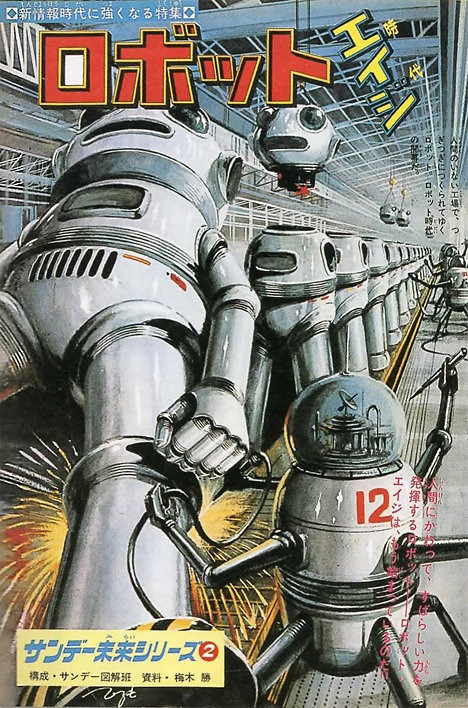
Robot workers [View full image]
In the coming Robot Age, assembly lines will be manned by tireless robot workers. Once the robots start building newer and better versions of themselves, the need for human factory workers will cease to exist.
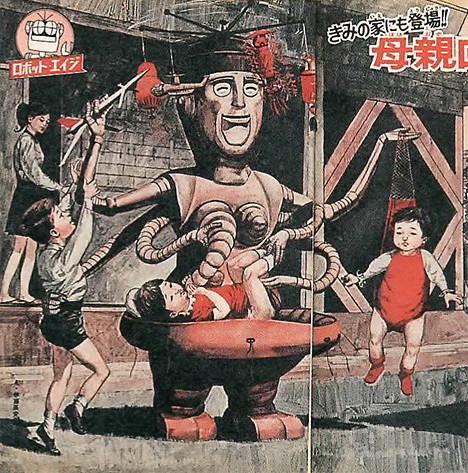
Robot nanny [View full image]
Autonomous robot nannies will care for the kids when mom is busy. In addition to singing and playing games, these gentle robots will breastfeed babies and cuddle them when they cry.
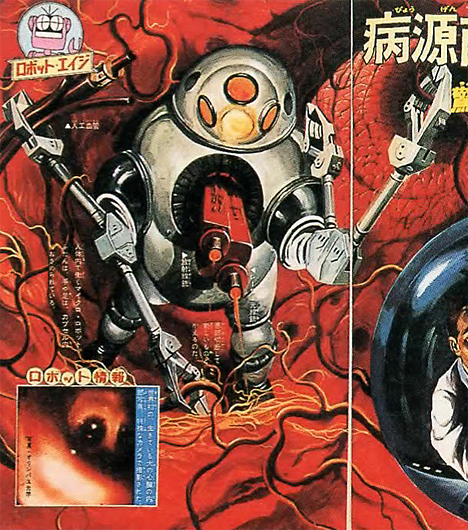
Surgical micro-robots [View full image]
Surgical micro-robots that navigate the human body will usher in a new era of medicine. Equipped with lasers and tiny hands, these miniature machines will be able to perform delicate operations inside the body (such as replacing damaged blood vessels with artificial ones), reducing the need for open surgery.
[Images via: Tokyo Scum Brigade]
- See also: Computopia: Old visions of a high-tech future
